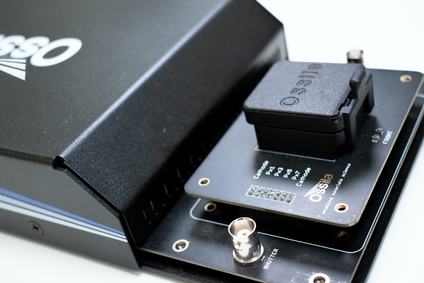What is Luminance?
Luminance is a measurement of the intensity of light per unit area, traveling in a specific direction. It is the scientific quantification of brightness, enabling us to compare the quality of different light sources and displays. Luminance describes the amount of light that falls within a given solid angle. The source of light can pass through, be emitted from, or reflected from a particular area.
Relative luminance accounts for human vision by applying a spectral scaling to light and adjusting its luminance relative to a reference white. It represents the perceived power of light per unit area at a specific point on a surface in a given direction. It is referred to as radiant flux density modified by the CIE Standard Observer’s luminosity function. The modification ensures that the luminance measurement aligns with how an 'average person' perceives light.
Unit of Luminance
The SI unit for luminance is candela per square meter (cd/m2) where candela is the unit of luminous intensity and square meter describes the unit of area. One candela is equal to one lumen per steradian (lm/sr) which describes the power of a light source. Therefore, lm/sr/m2 is interchangeable with cd/m2. Luminance is also quoted with the unit nit (nt) thought to come from the Latin word nitēre which means “to shine”.
Luminance Formula
The formula to determine the luminance of a specific point of a light source that is traveling in a specific direction:
|
Lv dΣ d2Φv |
luminance (cd/m2) infinitesimal area (m2) of the light source containing the specified point luminous flux (lm) leaving dΣ in any direction contained inside the solid angle dΩΣ |
dΩΣ
θΣ |
infinitesimal solid angle (measured in steradians, sr) containing the specified direction angle between the normal nΣ to the surface dΣ and the specified direction |
Luminance parameters can be depicted in a simple schematic as shown below. Luminance describes the amount of light emitted from a surface in a specific direction within a defined three-dimensional cone (represented by green lines in the schematic). The solid angle, dΩΣ, determines the size of this cone. The area element of the light source, dΣ, represents the portion of the surface being measured at a specific point. The angle, θΣ, indicates the tilt of the solid angle relative to the surface.
If the ray of light experiences no energy loss, the luminance doesn't change. In the schematic luminance is the light reflected from the surface (s), in the dark blue cone. The formula to determine luminance of such a light ray as it passes through or reflects off a surface (S) is:
|
dS |
infinitesimal area of surface (S) seen from the light source inside the solid angle dΩΣ
|
dΩS θS |
infinitesimal solid angle angle between the normal nS to dS and the direction of light |
Luminance Measurement

Photometry is used to measure luminance and allows us to measure light in terms of how humans perceive brightness. The luminous power emitted from or passing through a light source into a solid is measured. This is particularly important for measuring the quality of light-emitting devices and displays.
Light-emitting diodes (LEDs) undergo many measurements in order to determine their quality. Ultimately, for commercial applications one of the key quality indicators are how they are perceived by the human eye. The luminance of an IPhone 15 Pro Max reaches a peak of 910 cd/m2. New organic light-emitting diodes that contain molecules such as, TSBPA and PO-T2T, have reached a maximum luminance of 31,000 cd/m2.
Specialist equipment, like the Ossila LED Measurement System, measures the quality of your LED device. Current efficiencies, voltage efficiencies, illuminance and white count are measured alongside luminance using free integrated software. Designed to address common frustrations and make rapid characterization accessible, the Ossila LED Measurement System is low cost solution which simplifies important current-voltage-luminance measurements.
LED Measurement System

Learn More
Light can be measured either photometrically (only light visible to the human eye is considered) or radiometrically (also considers the energy in the invisible parts of the electromagnetic spectrum).
Read more...A chromophore is a molecule or section of a larger compound that absorbs and reflects specific electromagnetic radiation. Any visible light that is reflected by the molecule is observed as color.
Read more...Contributors
Written by
Application Scientist
Diagrams by
Graphic Designer